Memorial Day and the unofficial beginning of summer is upon us. And as it begins, the great website of baseball-reference.com tells us that 23,204 men have made it to the big leagues. Of those, 373 have reached the career plateau of 200 homers, 160 have hit 300, 58 have hit 400, 28 have cracked 500 while nine have achieved the 600 mark and only four are in the 700 club. Whew, that’s a mouthful. Breaking it down a bit further: 1.6% have reached 200, .0069% have reached 300, .0025% have reached 400, .0012% have reached 500, .0004% have reached 600 and .0002% have reached the 700 mark. And to offer one more way to look at it: one in 62 players hit 200, one in 145 hit 300, one in 400 hit 400, one in 828 hit 500, one in 2,576 hit 600 and one in every 5,796 big leaguers hit 700 career homers. I offer this tidbit of baseball minutia to simply illustrate the true magnitude of these accomplishments.
There are currently 29 active players who have 200+ career home runs and three are less than 10 away. The top five are: Giancarlo Stanton 413, Mike Trout 378, Joey Votto 356, Paul Goldschmidt 344 and Nolan Arenado 328. It is worthy of note that Stanton, the active leader, has less plate appearances than the other four in this top five list.
Recent research reminded me that when I was a seven-year-old kid, well on my way to becoming a baseball junkie, Ted Williams became the fourth player to hit 500 career home runs. Twenty-five years later, now a totally certifiable baseball junkie, I worked for one of the finest gentlemen I ever met, Fred Martignetti, owner of Carolina Wine Company. Fred too, was a baseball nut and I would go into work early on Fridays just to sit with him and talk baseball. We consoled each other through the gut wrenching 1986 World Series and that’s all need be said of that! One of our topics was the 500-home- run club. So, return with me now to “those thrilling days of yesteryear,” and let’s take a look at the first five guys who cracked the exclusive 500 home run mark. I chose 500 because, until the circus of McGwire, Sosa, Bonds et al, 500 homers were an automatic ticket punch into the Hall of Fame. Today there are seven members of the 500 club who are not in the Hall of Fame including the all-time leader.
Every one of the 23,000+ players is a story unto himself and frankly most of them are unknown. However, every one of them crossed paths, intersected, competed with and against all those names which roll off the tongues of generations of baseball fans. From the superstars to the cup of coffee guys all share the same legacy of this, the greatest of games and the singular best thing that America has exported! It is in this spirit which I looked to find the 10 guys whose path’s crossed with the first five who hit career home run number 500!
Come along and enjoy the ride.
It all begins with this fella! The first dude to revolutionize the game. When he joined the Red Sox in 1914, he hit popups so high and foul balls so far, the fans would cheer them. He earned nicknames like “The Colossus”, “Caveman”, “Tarzan” and “The Mauler” before going to New York to become “The Bambino” and hit 659 of his 714 career dingers.
1.Babe Ruth
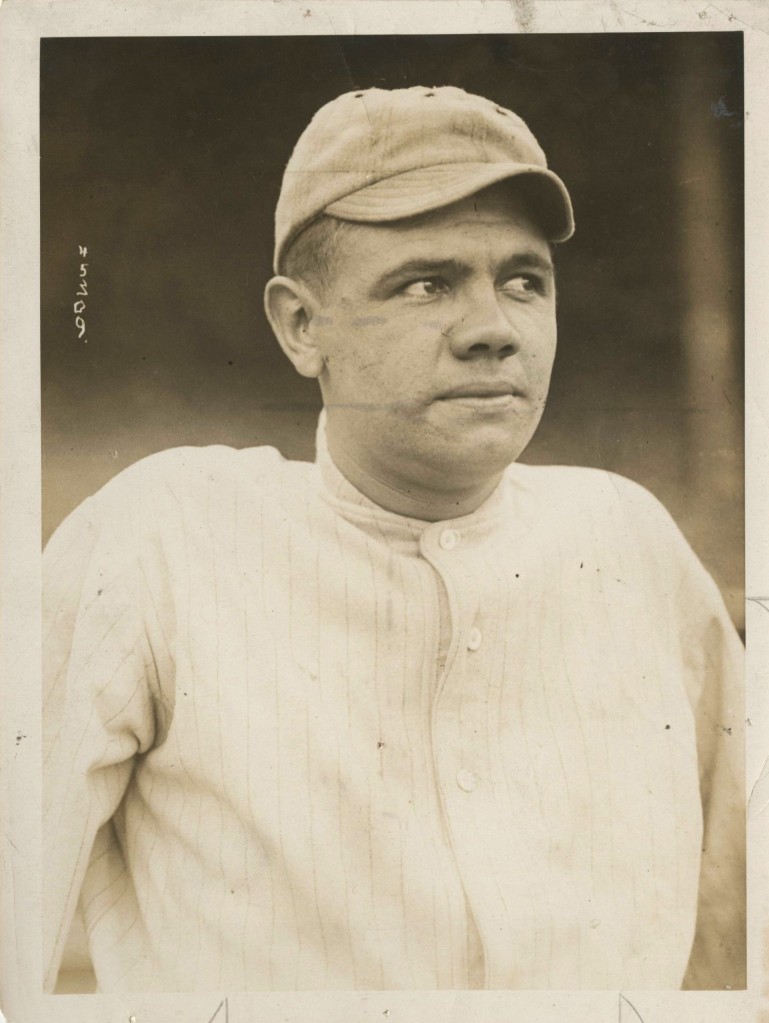
George Herman Ruth is the most dominant, most productive, most valuable player to ever play the game. His litany of dominance spans the wide breath of offensive categories. Here goes: eight times he led the league in runs scored, 12 times in home runs, five times in RBI, 11 times in walks, 10 times in OBP, 13 times in slugging percentage, and, despite having a career batting average of .342 (9th in history), he garnered only one batting title. Looking at some modern metrics reveals that in the metric category that perhaps best indicates overall production (OPS+), he led the league 12 times and 11 times he was tops in WAR. His career OPS+ of 206 is tops in the game and he is the only player with a career OPS+ above 200. Nine times he achieved a double-digit figure in WAR. His 14.1 WAR in 1923 remains the highest ever in a season. He also holds the second and third highest, the fifth highest and the 10th highest WAR totals in one season. Fifty-nine times a double-digit WAR has been reached in a season; Babe owns nine of them. His .690 slugging percentage is first all time and his .474 OBP is second all time. His is first all-time in OPS, and third all-time in both home runs and RBI. And this doesn’t even reflect the fact that when he left Boston for the “Big Apple,” he was the best left-handed pitcher in the game!
Babe was one of the first five named to the baseball Hall of Fame, joining Ty Cobb, Honus Wagner, Christy Mathewson and Walter Johnson. Cobb led all voters with 98.2% of the vote. Babe and Wagner garnered 95.1%, Mathewson 90.7% and Walter Johnson, 83.6%. This started a precedent that took 83 years to overcome; the precedent of no player receiving 100% of the vote. He hit a home run every 14.88 times he stepped up to the plate.
His first, came off of this guy.

Jack Warhop, pitched for eight seasons with the NY Highlanders/Yankees from 1908-1915. He won 68 games and lost 92 with his best year coming in 1910 when he was 14-14. It was May 6, 1915, at the Polo Grounds, when his career intersected, with that of a 20-year-old rookie named George Ruth. Ruth stepped up to the plate in the third inning and “swatted a low ball into the upper tier of the right-field grandstand and trotted about the bases to slow music,” His first big league home run gave the Red Sox a 1-0 lead. The Yankees defeated the Red Sox 4-3, walking it off in the bottom of the 13th. “Babe…who pitched a wonderfully good game from the start, weakened a bit in the 13th, yielding two successive singles which, with a steal gave the much-coveted run to the Yankees.” Warhop also delivered the pitch which resulted in Babe’s second home run a month later at the same Polo Grounds.
Boston Globe account of Babe’s first homer.


In 1999 the historical society of West Virginia, immortalized the connection between their hometown hero and “The Bambino.”
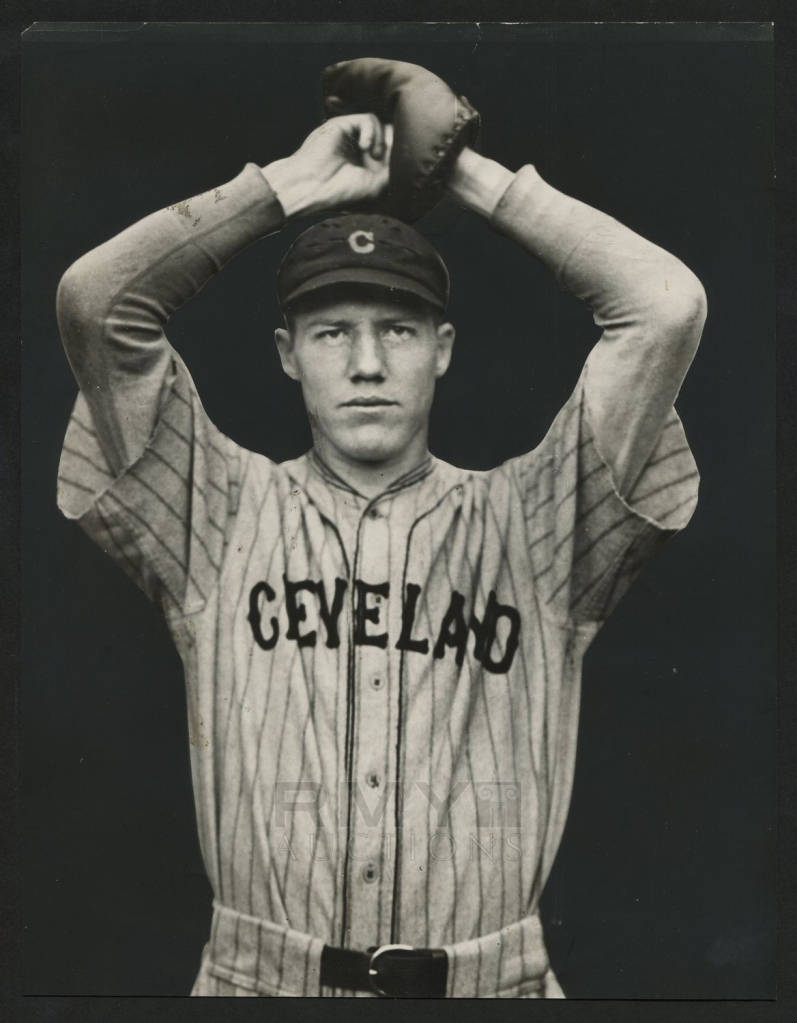
Willis Hudlin was a baseball lifer. His pitching career spanned three decades, and his record was 158-156 with 31 saves. He would own, manage and coach minor league franchises. He became the Detroit Tigers pitching coach in 1957 and served in that capacity for three seasons, mentoring a young Jim Bunning to his only 20-win season in 1957 and his first no-hitter in 1958.
Born in Wagoner OK in 1906 he grew up idolizing Boston’s pitcher Babe Ruth. Little did he know that he would face the Babe 102 times during his career. Babe handled the kid pretty well, batting .468 with five home runs. One of those five came on August 11, 1929, in Cleveland’s League Park.

The 500th home run of his idol’s career.
Babe hit it leading off the second inning and staking the Yankees to a 1-0 lead. However, Hudlin and the Indians prevailed, winning the game 6-5. Willis passed away in 2002 at the age of 96, surely proud of his immortal connection to the man he idolized as a boy.
2. Jimmie Foxx

James Emory Foxx, they called him “Double X” and the “Beast” and what a beast he was. Baseball’s original right-handed slugger, he spent his first 11 years with Connie Mack’s Philadelphia A’s: where he led the AL in homers three times, RBI twice and he won back-to-back MVP Awards while winning the 1933 Triple Crown. Following the 1935 season, Foxx was traded to the Red Sox for three unknowns and $150,000. He won two more home run titles, another RBI title, a third batting championship and he was the 1938 MVP. His 50 home runs in 1938 was a Red Sox record for 68 Years. Arguably the player of the decade of the 1930s, he hit 415 homers, knocked in 1,403 runs, hit .336 and his OPS+ was 173. Only the second player to have multiple 50+ home run seasons, he averaged 42 homers and 140 RBI per season in the 1930s. He was elected to the Hall of Fame in 1951, his eighth time on the ballot receiving only 79.2% of the writer’s votes! Yikes! He hit a home run every 18.12 times he stepped in the batter’s box.

Urban Shocker pitched 13 years in the big leagues, sandwiching seven years with the St. Louis Browns between six with the Yankees. His career mark was 187-118 with most of those wins coming with the Browns. He had four successive twenty-win seasons in St. Louis, including a league leading 27 wins in 1921. A 36-year-old veteran he was 18-6 on the 1927 Yankees, considered by many the greatest team of all time.
It was May 31st in the sixth inning of the second game of a double-header at Shibe Park and the Yankees were drubbing the Athletics 15-3 when Connie Mack inserted 19-year-old Jimmie Foxx behind the plate. Although he had played in parts of two seasons, Foxx was a rookie in 1927. He had been with the team from the outset but had only seen seven at bats in the eight games he’d appeared in. The Yankees had extended the lead to 18-4 by the time Foxx came to bat in the bottom of the eighth and hit his first home run deep into the left field stands accounting for the final 18-5 score. It was Shocker’s third complete game win in a row, leaving him 6-3 on the year.
A touch of irony, or perhaps serendipity, that in this game Babe Ruth hit career home run number 372, his 16th of the year on his march to his historic 60 home run season. And Jimmie Foxx, the 19-year-old kid who’d be second to 500 career homers, hit his first.

Observations of Philadelphia Enquirer sportswriter James Isaminger, of Foxx’s first homer.

George Caster pitched 12 years in the big leagues with the Philadelphia A’s, St. Louis Browns and closed out with two seasons in Detroit. He went 76-100 with a 4.54 ERA. He led the AL in losses twice, (20 in 1938, 19 in 1940). He also led the league with 40 starts in 1938 and in saves (12) in 1944. In his final year with Detroit in 1945, he pitched 2/3 of an inning in game six of the World Series, retiring both batters he faced. Two days later he became a World Champion when the Tigers closed out the Cubs in the seventh game.
George was a teammate of Jimmie’s his first two years and in fact in his rookie year of 1934, Foxx hit a home run leading off the eighth inning giving Castor and the A’s a 5-4 win against Washington. It was George’s third win in his fourth big league appearance. Following the 1935 season Foxx was traded to the Red Sox and Castor would face him 55 times throughout their careers. Foxx hit .341 against him, taking him deep six times. He nipped his old mate for home runs number 359, 378, 411, 466, 482 and of course the coveted 500. That came on September 24, 1940, at Shibe Park.
Jimmie Foxx is the first one of these fellas to hit his first and 500th home run in the same ballpark.

Foxx’s 500th came in the midst of a sixth inning barrage by the Red Sox. Dom DiMaggio led off with a triple which was followed by a sacrifice fly or as they said back in the day, a “run scoring fly ball.” Ted Williams then homered which was followed by Foxx’s 500th, which was followed by Joe Cronin’s homer. The three dingers by these three future hall-of-famers tied a record for consecutive home runs in an inning. Hall-of-Famer Bobby Doerr then tripled which was followed by Jim Tabor’s home run, the fourth of the inning.
3. Mel Ott

At 5’9″ tall and 170 lbs., Melvin Thomas Ott was the smallest of these home run heroes. A 17-year-old rookie in 1926, he played in 35 games, garnered 60 at bats and banged out 23 hits, finishing the year hitting at a .383 clip. He played 22 seasons, collecting 511 home runs along the way, all with the Giants. Six times he led the NL in home runs, five times in OBP and five times in OPS+. He played in his first World Series in 1933, and if the award existed, he surely would have been the MVP. With Ott leading the charge (.389 with 2 HR and 4 RBI) the Giants beat the Senators in five games. In 1951, his third year on the ballot, “Little Mellie” was elected to the Hall of Fame with 87. 2% of the vote.

The second and third men to reach the 500-home run plateau, went into the Hall of Fame together in 1951.
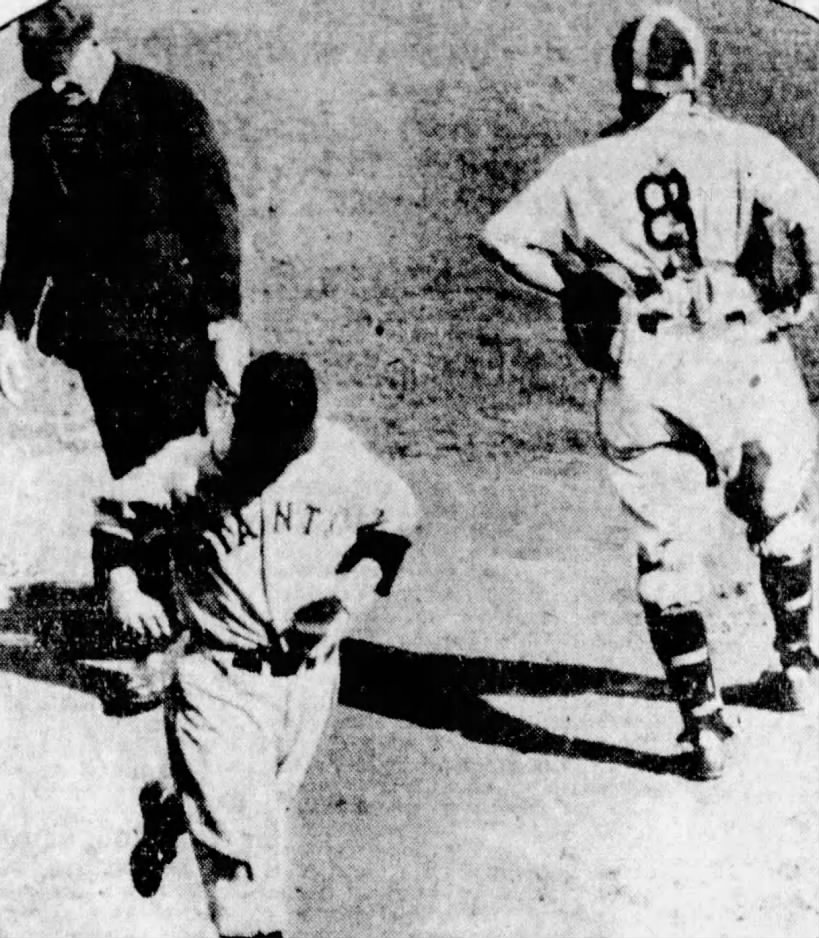
Mel Ott crosses home after his two run, first inning homer into the right field stands at the Polo Grounds gives the Giants a 2-0 lead in game one of the ’33’ World Series.

Describing Ott’s Series ending clout, AP Sports Editor Alan Gould wrote, “The mighty bat of ‘Little Mel’ Ott, the Louisiana Larruper, who struck the first big blow for the Giants just four days ago, produced the decisive punch with a home run to the bleacher pavilion in left center in a rousing tenth-inning finish.” Ott played in two more Fall Classics, with his Giants bowing to the Yankees in both 1936 and 37. His career World Series totals are .295 with four homers and 10 RBI.

Hal Carlson pitched 14 years, all in the NL with the Pirates, Phillies and Cubs. He was 114-120 with a 3.97 ERA. His best year was 1926 with the Phils, going 17-12 with a 3,32 ERA, an ERA+ of 132 and a league leading pitching WAR of 8.3. He also led the league in shutouts (4) in 1925.
Traded to the Chicago in June of 1927, the 35-year-old veteran was making his fourth start with the Cubs in the first game of a Monday double header on July 18th, in the Polo Grounds. With two outs in the first inning, 18-year-old center fielder stepped to the plate. Still a rookie in 1927, he was mostly coming off the bench and had started only nine games when Manager John McGraw inserted him in the lineup for the first game of a double-header. Batting third and playing centerfield, Ott came to bat in the first and hit a screaming line drive towards centerfield which Cubbies Hall of Fame centerfielder Hack Wilson made a diving attempt to catch. He was unsuccessful.
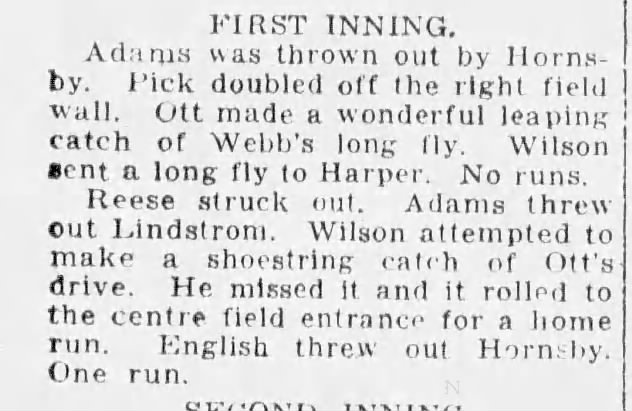
Ott is the only member of this group to have their first homer be an inside the parker.

Purchased by the Cincinatti Reds from the Pensacola Pirates of the Southeastern League following the 1939 season, Johnny Hutchings arrived in Tampa Florida a highly touted prospect. “His whiplike delivery made some old-timers think of…Giants star Amos Rusie”, and others called him “the best prospect they’d had in years.” He would pitch only 65 innings with the Reds, in 27 appearances, go 2-1 and in June of 1941 he was traded to the Boston Braves for Lloyd Waner. He pitched five seasons with the Braves, his best coming in 1945 when he hurled 185 innings, going 7-6 with three saves. He hurled three shutouts and led the league in surrendering 21 home runs. One of them came on August 1st, in the Polo Grounds to Mel Ott, the 500th of his career.
Johnny was a World Champion in 1940 with the Reds owned the distinction of being traded for a Hall of Famer, Lloyd Waner.

Ott joined Foxx in hitting home run numbers one and 500 in the same park. The little fella with the high leg kick hit a home run every 22.19 times he set foot in the batter’s box.
4. Ted Williams
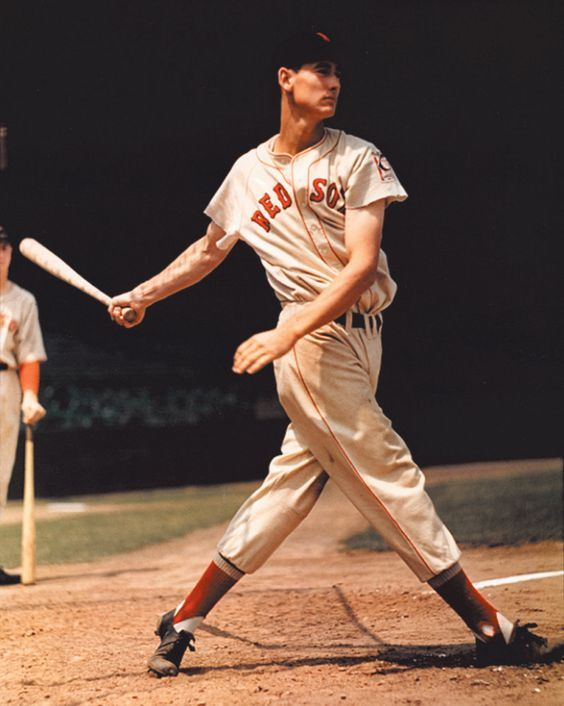
Theodore Samuel Williams, like the Babe before him collected a number of monikers in his time, “The Kid”, “Thumper”, “The Splendid Splinter” and “Teddy Ballgame.” Following his game winning home run in the 1941 All-Star game, he was interviewed by United Press correspondent George Kirksey. “I asked him if he had any desire to hang up a consecutive game hitting record like Joe DiMaggio”, he wrote. Ted was swift and sure in his reply. “I sure have…I want to break every hitting record in the book. When I walk down the street, I’d like for them to say, there goes Ted Williams, the best hitter in baseball.” These words followed Williams throughout his career and beyond and he damn sure put himself in the discussion as the all-time “best hitter in baseball.” His dominance, production and value are about a quarter of a tick below that of “The Babe”. He also possesses a litany of dominance which encompasses the wide breath of offensive categories: six times he led the league in runs scored, four times in both homers and RBI, eight times in walks, 12 times in OBP, nine times in both slugging percentage and OPS and six times he won batting titles. He twice won the coveted Triple Crown and of course, 73 years after his .406 batting average in 1941, he stands as the last hitter to hit .400. Reviewing his performance through the modern metrics, he led the league in WAR six times and in OPS+ 12 times. His career OBP of .482 is the best all-time and he ranks second all-time to “The Babe” in OPS+ (191) and slugging percentage (.634). He hit a home run every 18.80 plate appearances.
He entered the Hall of Fame in 1966, his first year of eligibility garnering 93.6% of the vote. Remarkably, 20 writers did not find “The Splendid Splinter” Hall of Fame worthy.
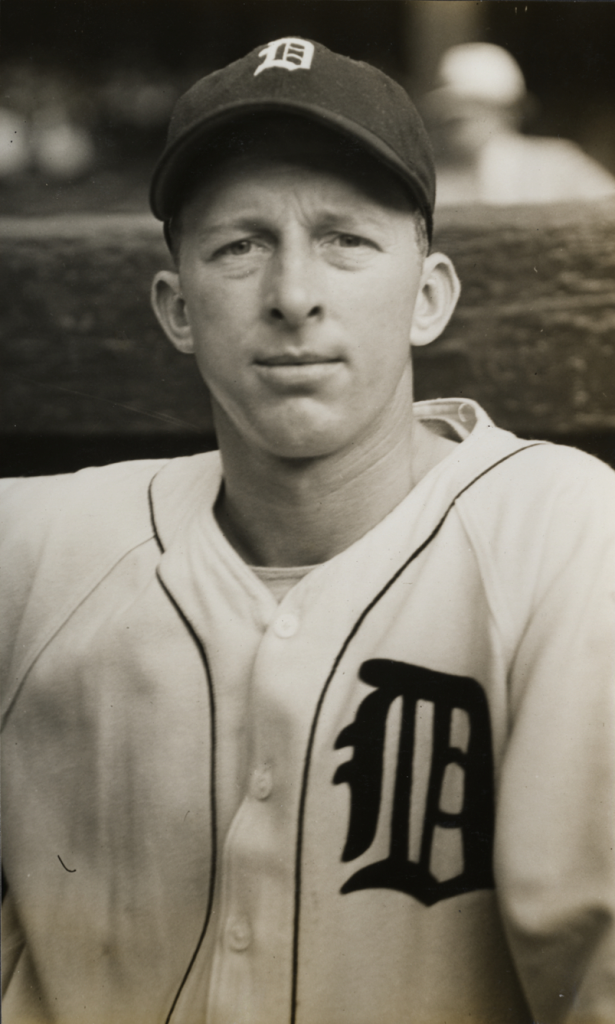
Bud Thomas pitched 143 games over seven seasons with the Senators, Athletics and Tigers. He pitched a combined seven innings with the Senators in 1932 and 33. After two more years of minor league ball, he cracked the Athletics starting rotation in 1937 going 17-29 in two seasons. It was April 23rd, the fourth game of the 1939 season when Bud took the hill at Fenway Park; 12,000 fans were on hand, many to get their first look at the Red Sox rookie right-fielder, Ted Williams, the sixth hitter in Joe Cronin’s lineup. Carlson was staked to a 3-0 lead when the A’s plated three runners in the top of the first with only a single. Five walks by Red Sox starter Elden Auker made for an early exit for the veteran hurler. Thomas would suffer the same fate as he faced only six batters. The last was Ted Williams who “socked the ball into the centerfield seats for a home run, driving Tabor in ahead of him.” It also drove Bud Thomas from the game. A week later he was claimed by Washington off waivers, three weeks after that the Tigers grabbed him from Washington. The remainder of the ’39’ campaign, Thomas went 7-0 with the Tigers, however by the end of the 1941 season he was gone from the game. But not before he surrendered career home run number 67 to Ted Williams on June 17, 1941, at Fenway Park.

Following Ted’s first home run, the Boston Globe headline read, TED WILLIAMS WINS RIGHT TO IDOLATRY OF FANS.
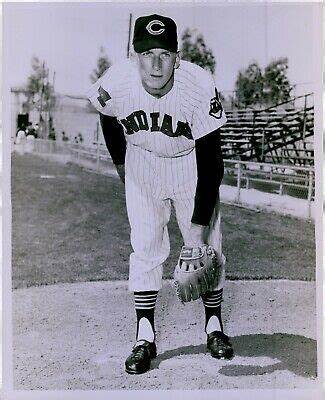
Wynn Hawkins was a three-year-old toddler in East Palestine Ohio when Williams hit home run number one in 1939. He was a 21-year-old rookie in his seventh big league start on June 17, 1960, when Ted Williams stepped in the batter’s box in Cleveland Stadium. It was the third inning and the rookie had induced “Teddy Ballgame” into a ground out to second base in the first. Wynn delivered and Williams connected, hitting a high outside fastball into the bleachers in left-centerfield. His abbreviated career ended following the 1962 season. He threw 203 innings in 48 games for a career record of 12-13. His high watermark came in 1961, a two-hit shutout against the Minnesota Twins.

His first win was an 11-inning effort in Detroit in which: he outlasted Hall of Famer Jim Bunning, held Hall of Famer Al Kaline at bay (0-4, 2 BB) and his win was saved by Jim Perry, author of 215 big league wins. Prompting this limerick from James Doyle of the Plain Dealer.

Williams hit 21 more home runs before retiring following the ’60’ season, with number 521 coming in his last at bat off of Baltimore pitcher Jack Fisher, at Fenway Park.
5. Willie Mays
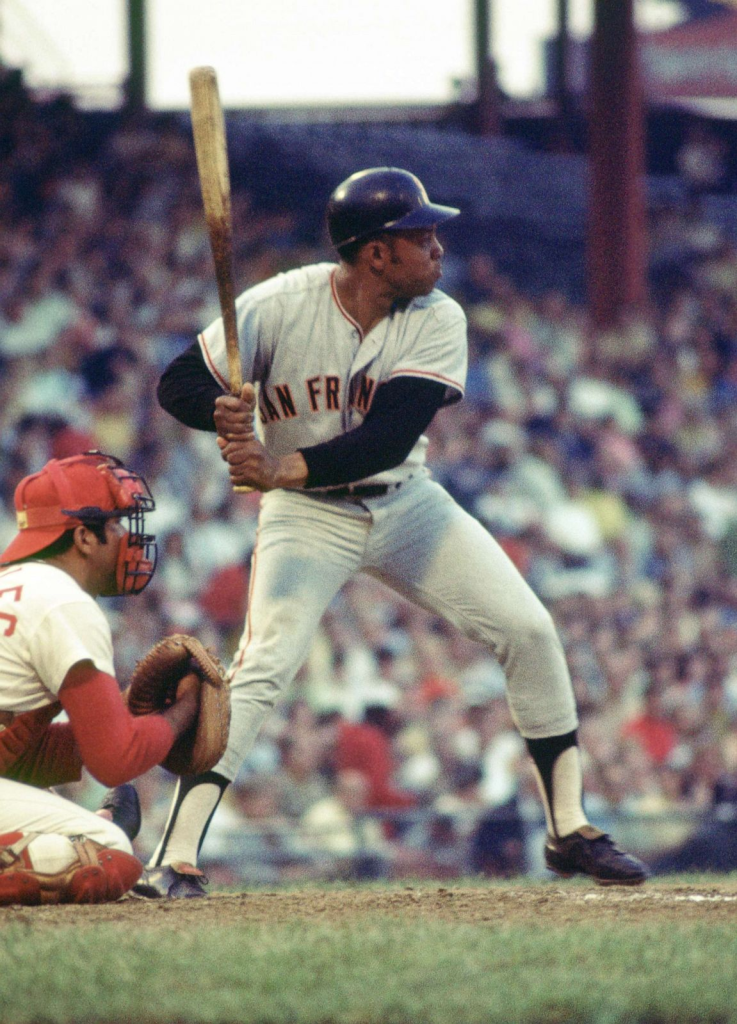
Willie Howard Mays, named after his father who was named after William Howard Taft, the president when he was born in 1912, is widely recognized as the greatest all-around baseball player who ever lived. Joining the Negro League Birmingham Black Barons in July of 1948, Willie turned the Alabama Citizen into a prophet by being the regular centerfielder within weeks.
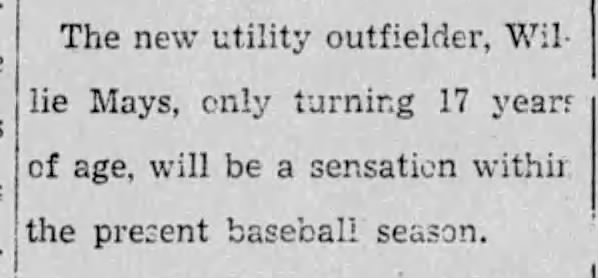
He became a sensation and in fact drove in the winning run in the only game they won in the World Series against the Homestead Grays. Willie made a similar impact upon the NY Giants in 1951. The overwhelming choice for National League Rookie of the Year, he hit .274 with 20 HR and 68 RBI. Drafted into the Army just 34 games into the 1952 season, he did not return until 1954. And what a return it was! He hit a career high .345 (his only batting title), with career highs and slugging and OPS, leading the league in both. He had his first double digit WAR season, a league leading 10.5 and he was voted the National League MVP.
Willie would go on to lead the NL: in runs scored twice, home runs and stolen bases four times, walks once, OBP twice, slugging and OPS five times and OPS+ six times. Ten times he led the league in WAR achieving the rarity of a double-digit WAR on six occasions. He is the only player in baseball history to reach a double-digit WAR in four consecutive seasons (1962-65). In 1965 he joined Babe Ruth, Jimmie Foxx, Ralph Kiner and Mickey Mantle as the only players to register 50+ home run seasons more than once and when he retired, he was third on the All-Time home run list (660) behind Babe Ruth (714) and Hank Aaron (713). Today he is sixth on the home run list and 12th all-time in RBI (1909). Willie clobbered a home run every 19 times he stepped into the batter’s box.
He was elected to the Hall of Fame his first time on the ballot receiving 94.7% of the vote. Perplexingly, 23 writers did not vote for the “Say Hey Kid.”
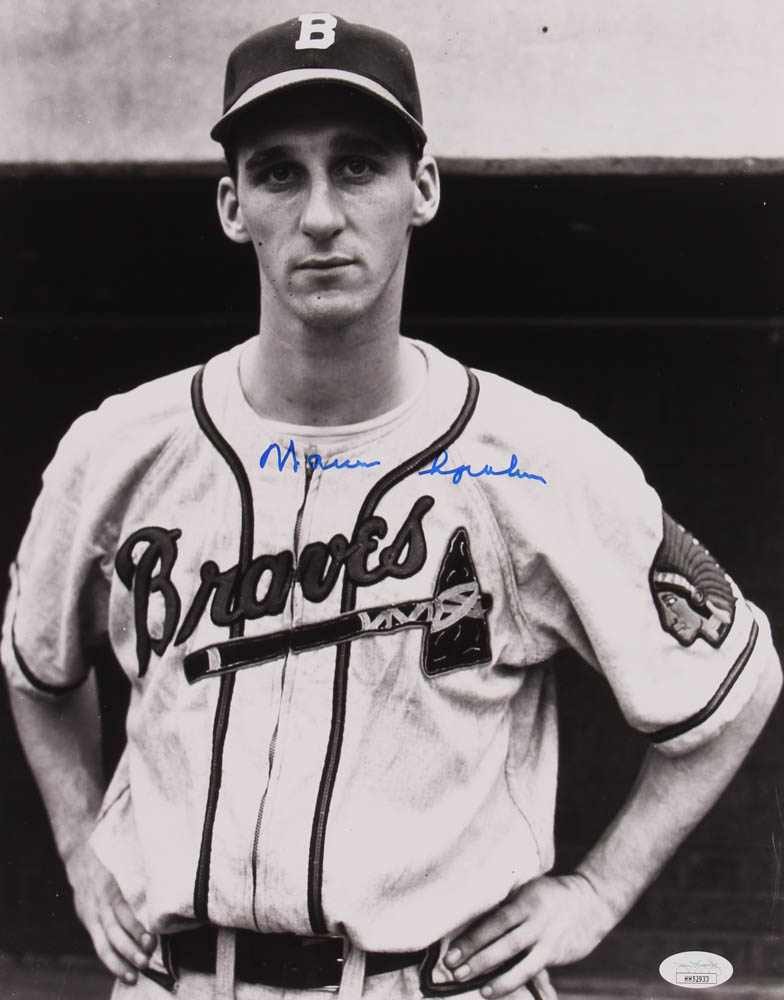
Warren Spahn was in the midst of his seventh season when he took to the mound in the Polo Grounds on May 28, 1951. He had led the league in both wins and strikeouts in the 1949 and ’50’ seasons. He was 86-58 with a 3.07 ERA and had emerged as the best left-handed pitcher in the game. Willie Mays had been called up on May 25th and was inserted into centerfield and the third spot in the Giants lineup. He was hitless in his first three games when he stepped into the batter’s box for his first home at bat. Willie swung and “banged far over the left roof” and in one swing had his first hit, his first run scored, his first RBI and his first home run. Willie hit a total of 18 home runs off of Spahn throughout his career, more than any other pitcher. The last coming on April 25, 1965, in San Francisco’s Candlestick Park, Willie’s 457th career homer.
Spahn would pitch for 15 more seasons and win more games (363) than any other lefty in the game’s history. A 12-time 20 game winner, he led the league in wins eight times, including five in a row. Nine times he led the league in complete games (seven in a row) and he pitched 5,244 innings, the most of any lefty in history. He was a first ballot Hall of Fame inductee in 1973 earning 83.2% of the votes from the members of the BBWAA. Inexplicably 64 voting members did not think Warren Spahn Hall of Fame worthy.

Is it serendipitous or ironic; that Babe Ruth hit his first career home run, at the Polo Grounds, on Willies birthday, sixteen years before Willie was born. And Willie hit his first career homer, at the Polo Grounds, three years after Babe Ruth died? Perhaps a bit of both.

“Amazin Willie Mays”, wrote Daily News sportswriter Jim McCulley “…made his Polo Grounds debut last night and gave 23.101 partisans a thrill by hitting a mighty home run his first time at bat…” He is greeted by teammate Wes Westrum at the plate.

Don Nottebart pitched nine seasons in the big leagues with the Milwaukee Braves, Houston Colt 45s/Astros, the Reds, the Yankees and the Cubs. He pitched 922 innings, started 89 games completing 16 of them. He threw two shutouts and collected 21 saves. His overall record of 36-51 with a 3.65 ERA, on the surface may appear somewhat non-descript. However, Don’s career is marked with distinction and is the embodiment of the American Dream. Born in West Newton Massachusetts in 1936, he was raised in nearby Lexington and when he graduated from Lexington High School in 1954, he received offers from several major league clubs. What those clubs didn’t know was that he wanted to be a Brave. Growing up a Braves fan, he idolized Warren Spahn and set his mind to be “a right-handed Warren Spahn. I just wanted to be in the same organization as my idol,” he told the Sporting News in 1957. And though it may have delayed his journey to the big leagues, he did get to share three seasons on the same pitching staff as his idol.
It was the bottom of the sixth inning on August 10, 1962, in Houston’s Colt Stadium and Warren Spahn was on the mound. He entered the frame winning 6-1. Six batters later it was 6-4 with two outs, Colts third baseman Bob Aspromonte was on second base and pinch-hitter Don Taussig on first. Manager Birdie Tebbets strolled to the mound, signaling for the right-hander in the bullpen fulfilling a lifelong dream. The immortal lefty, destined for Cooperstown handed the ball to the kid from Lexington Massachusetts. Don Nottebart replaced his idol.
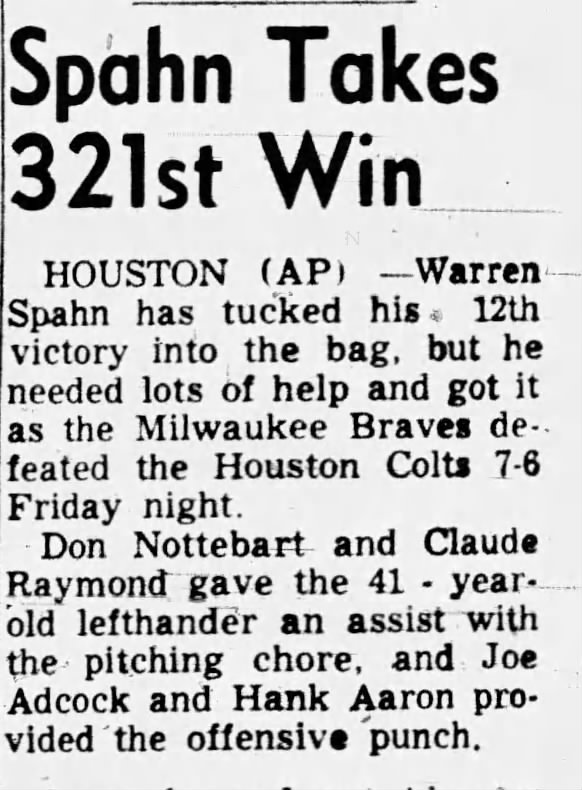
The kid got his idol out of the jam, getting the 45’s second baseman Bob Lillis to ground out to short. He pitched two innings, preserved the lead and Warren Spahn had career win number 321.
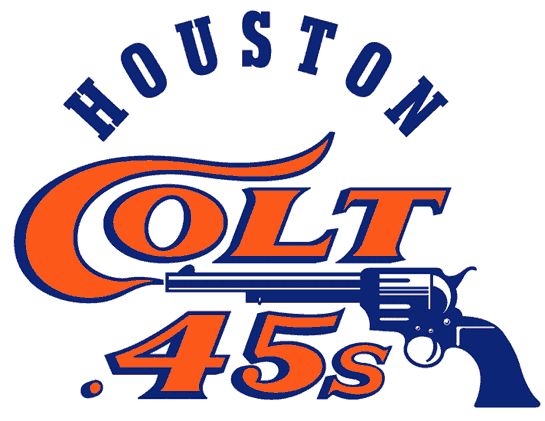
In November he was traded to Houston and for two seasons he got to wear one of the coolest uniforms in all of baseball history before donning the first ever Houston Astros uniform. And he had more history to write.

On May 17, 1963, in Houston’s Colt Stadium, Don Nottebart become the first pitcher in the Houston Colt 45’s/Astros history to throw a no hitter.

History came knocking again in September of 1965 and it would eternally connect him with the “Say Hey Kid” and reconnect him with his idol. The Colts were now the Astros and the Astrodome, not Colt Stadium was their home. The Giants arrived on September 13th for a four-game series in the “Eighth Wonder of the World.” Willie had hit home run #499 the night before. He entered September needing six to reach 500 and he’d been on a tear launching five homers in a week, including #497 off of Don Nottebart in San Francisco. Don was the Astros starter this night, squaring off against Juan Marichal who was seeking his 22nd win of the year. He faced Willie in the first inning getting him to pop out to second and in the bottom half of the inning Jimmy Wynn homered giving Nottebart and the Astros a 1-0, which they carried into the fourth. Leading off the fourth inning, Willie cracked a high fastball into the centerfield bleachers 410 feet away, tieing the game and becoming only the fifth player to hit 500 home runs.

Waiting for Willie at home plate was another Willie, McCovey who 13 years later would join Mays in the elite 500 Home Run Club. When he entered the dugout, Warren Spahn was waiting for him. “I saw the first one Willie,” he said to Mays, “now I’ve seen the 500th, you are a wonder.” And standing on the mound was the kid from Lexington Massachusetts, eternally linked to them both.

On September 22, 1969, four years and nine days after hitting home run number 500, Willie Mays hit home run number 600 in San Diego Stadium versus the brand-new San Diego Padres. Thirty-eight-year-old Willie had been given the night off by Manager Clyde King and early in the game, the scoreboard in centerfield flashed a message. “Join us tomorrow,” it said, “and see Willie hit number 600.” In the dugout Willie turned to his mates and quipped, “Tomorrow…I’m doing it tonight.”
It was the top of the seventh in a 2-2 game when King sent Willie up to pinch hit for rookie left-fielder George Foster. Foster was playing in his sixth major league game and in 1977 would become only the ninth player to hit 50 homers in a season. Ron Hunt was on first with nobody out when Willie swung at the first pitch and deposited it into the left-centerfield bleachers giving the Giants a 4-2 lead which they did not relinquish. The 4.779 in attendance gave a five-minute standing ovation to the second player in history to hit 600 home runs. Following the game, Willie spoke effusively, with UPI reporter Bob Stewart about the 600-home-run marker. ” The next person to hit 600 should be Henry Aaron…Three or four players might come along and reach 600…The kids today are bigger and stronger…” And to add just one more link, in the third inning Willie’s close friend and teammate Bobby Bonds struck out for the 176th time in the year, breaking the MLB record for strikeouts in a season. Willie would hit 60 more home runs in his career, the last 14 coming in the uniform of the Mets, playing in New York where it all began.
On the sixth of May, Willie Mays celebrated his 93rd birthday. The oldest living Hall of Famer has seen nine of those “bigger stronger kids” crack the 600-home-run barrier and he is one of only 34 former players, still living, who was alive when Babe Ruth became the first to 600 career home runs in August 1931.
And so it is on this day, Memorial Day 2024
SABR Bio Project, Baseball Reference and Retrosheet contributed to this effort.
